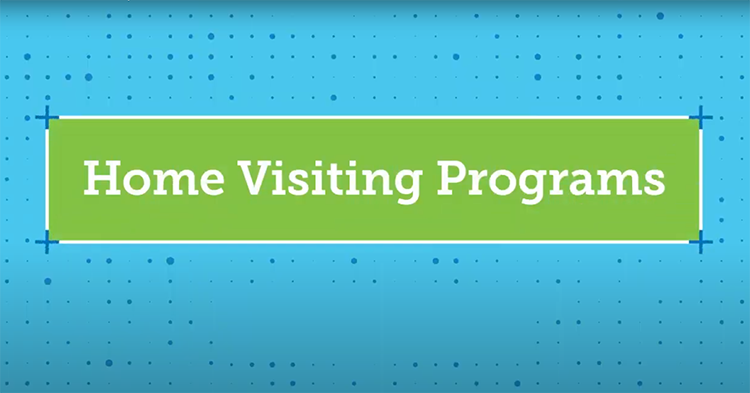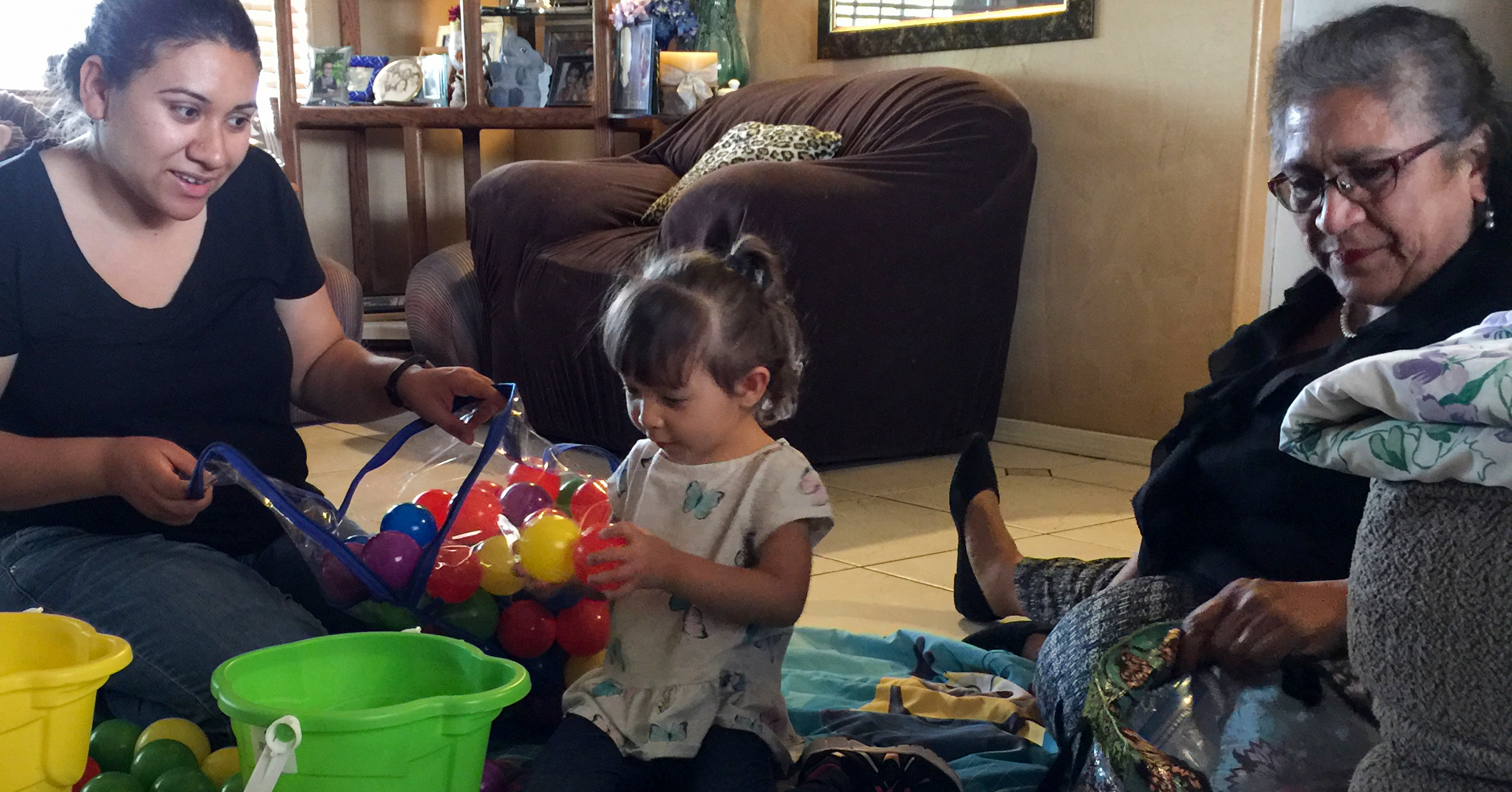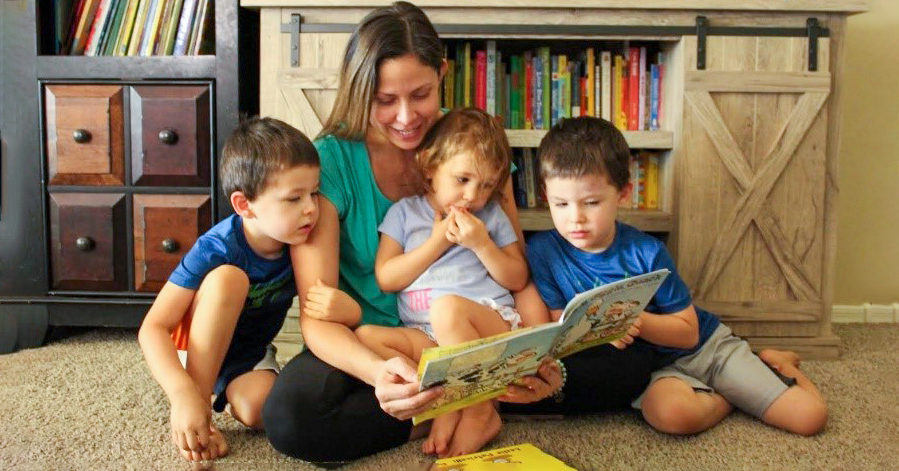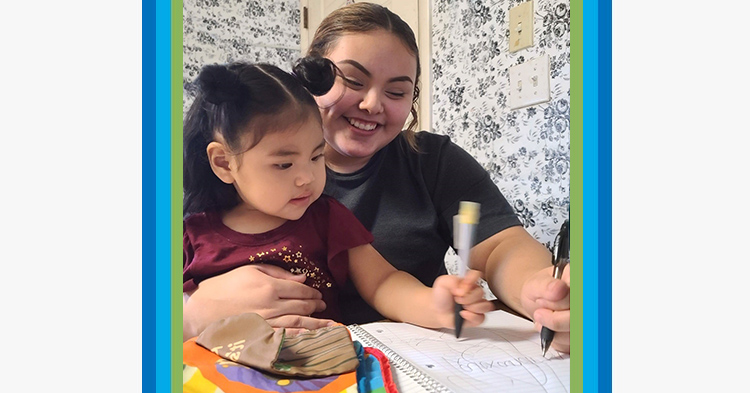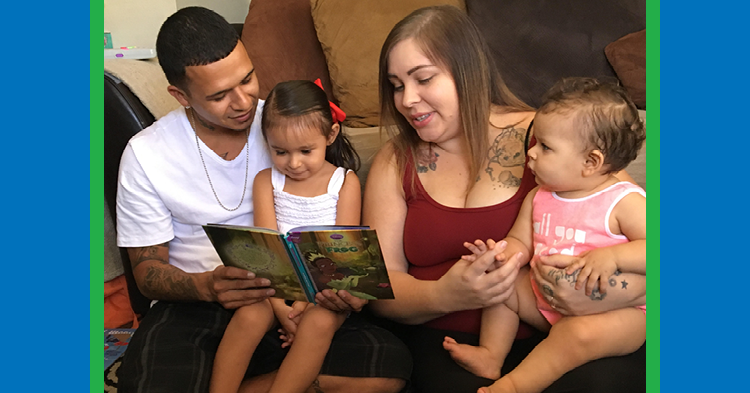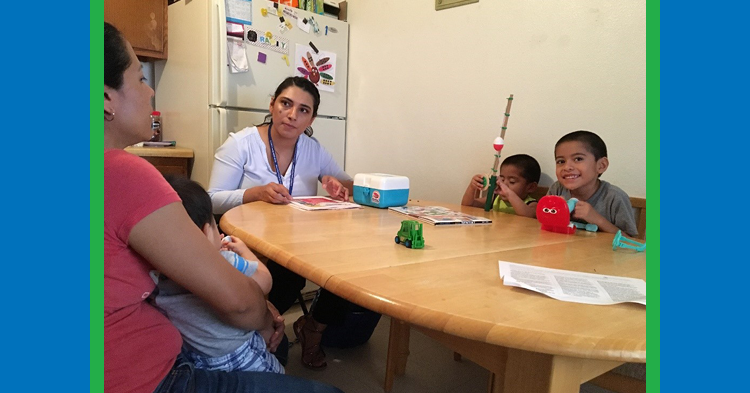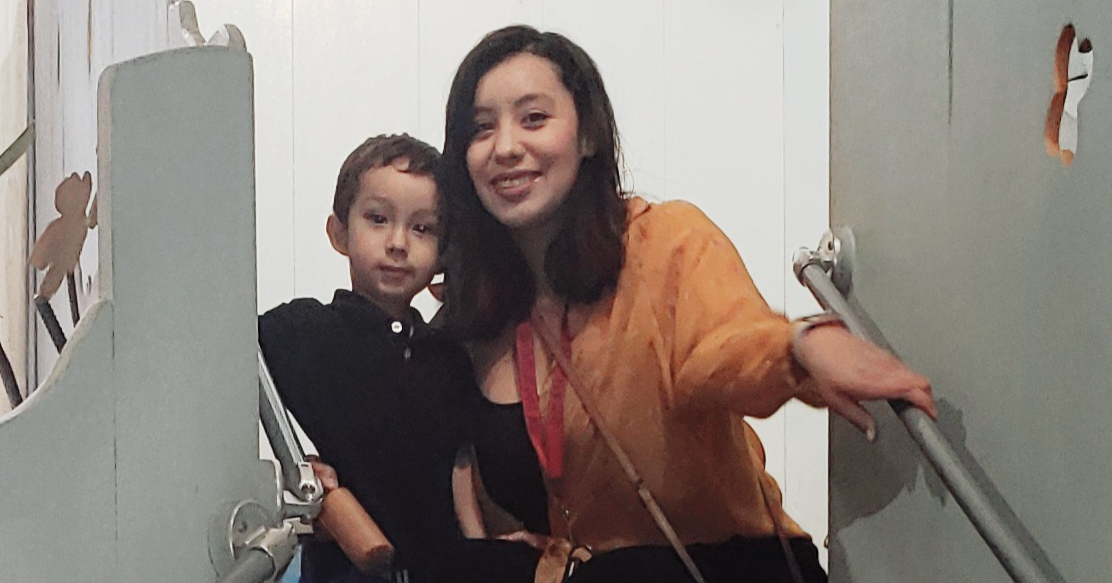
As the single-largest funder of home visitation programs in Arizona, First Things First recently shared a year’s worth of data showing that the programs are successfully reaching families who are most likely to benefit from this personalized support.
These include teen parents, low-income families and families with low education levels – all groups which are enrolled in these voluntary programs at higher proportions. Since families of infants and toddlers who are living in challenging circumstances benefit most from these voluntary, in-home visits with a parent coach, these findings reinforce the impact that these programs are having in helping thousands of Arizona parents be their child’s first and best teacher.
Here’s how home visitation works: the parent or primary caregiver receives regular in-home visits at no cost from a trained professional who provides parenting information, models ways to support healthy development and shares connections to other community resources. During the pandemic, home visits shifted to virtual services, but over the past few months, some programs have started to offer at least some in-person visits, based on the needs and comfort level of the program, staff and families.
These one-on-one visits with trained parent educators have been shown to support and empower families and children experiencing challenges, as well as to improve bonding and the relationship between parents and children.
FTF funds three home visitation models — Healthy Families AZ, Nurse-Family Partnership and Parents As Teachers — through 19 grant partners in 20 of FTF’s 28 regions, including 10 of its tribal regions.
Short- and long-term outcomes
Investing in home visitation provides many short- and long-term outcomes, said Christine Waldbeiser, FTF program specialist for Family Support and Literacy.
For example, “participating mothers are more likely to access prenatal care and carry babies to term,” Waldbeiser said.
Eventually, “home visiting improves children’s early language and cognitive development and academic achievement in grades 1 through 3.”
Enrollment criteria for the three models vary. For example, Parents As Teachers will enroll families with children birth to age 5, while Healthy Families AZ requires families to enroll prenatally or within 90 days of their child’s birth and Nurse-Family Partnership is exclusive to low-income, first-time mothers.
Identifying target populations
FTF regional councils are able to identify target populations to be served based on the unique needs of families in their respective region. For example, pregnant mothers are a target population in 15 FTF regions.
The FTF Pima North Region funds Easterseals Blake Foundation Nurse-Family Partnership program, which requires participants to be first-time mothers and enroll while still pregnant.
When Lydia Rader found out she was going to be a mom, a friend recommended that she enroll in the program. Rader, who lives in Tucson, was introduced to her home visitor, Jocelyn, a nurse, when she was seven weeks pregnant and their relationship began to blossom. The first-time mom was weary of the virtual Skype home visits at first, but soon realized that she looked forward to their frequent time together.
“Jocelyn went above and beyond every time we met,” Rader said. “She would troubleshoot any questions that I had and would even let me text her when I was in crisis mode.”
For example, when Rader was having trouble breastfeeding her son, Raymond, Jocelyn went step-by-step to find solutions to help the baby latch. Having a registered nurse serving as her home visitor has helped Rader again and again.
“Month by month, I had so many questions,” Rader said. “My family stepped in, but Jocelyn was always available to reassure me that I was doing everything right.”
Although all families could benefit from home visitation, research indicates that families living in challenging circumstances and those enrolled early while pregnant or parenting infants or toddlers benefit the most from home visitation and should be prioritized for enrollment, Waldbeiser said.
According to the State Fiscal Year 2019 data shared by FTF’s Research and Evaluation team, 4,440 families and 5,434 children were served through home visitation programs funded by FTF. Of those families, 53% were living in poverty, which is $39,300 annual income or less for a family of four.
Serving families that benefit most
“The data suggests that home visitation programs are enrolling and serving families that would most strongly benefit from home visiting services and they’re doing so at higher rates than those we see at the statewide level,” said Lisa Colling, FTF’s evaluation project director. “So we seem to be reaching the right audience at higher proportions in comparison.”
You might be interested in:
The Research and Evaluation team also highlighted family retention rates over SFY19. The FTF Coconino, Cocopah Tribe and Santa Cruz regions all had retention rates over 90%. Santa Cruz’s 93% was noteworthy considering it was a new partner implementing, Los Padres son los Primeros Profesores (Parents are the First Teachers) home visitation program.
“One of the things that we know keeps families engaged is that relationship with the home visitors and there is a balance of between expertise and educational level of staff and also their membership to local communities and ability to connect and relate to the local family,” Waldbeiser said. “For Santa Cruz, they speak the language, they’re from the local community and they can relate to the families. That’s a big piece of why families stay enrolled. They feel so connected and supported and related to their home visitor.”
Keeping families engaged
That connection helped Jefferson Laffey and Arlenne Piña when they moved to Nogales from Hermosillo, Sonora. The husband and wife knew they wanted a strong start for their family, including their two young children, Douglass, age 3, and Audubon, age 1.
“My husband and I want to have successful kids,” Piña said. “We knew if we did good things for them as children, then we wouldn’t need to worry about them in the future. We wanted to learn the best things we could do for our kids now, and this program has been helping us a lot.”
A parent educator helped Piña prepare Douglass for kindergarten by teaching him to write his name, identify colors and count. For Audubon, Piña found out about tummy time and crawling. Piña learned effective discipline techniques, milestones for each age and the importance of reading.
“I learned what I should read at each stage of development and how I can teach them while I read to them,” said Piña. “For Douglass, now I’m asking him questions to help him use his imagination. I ask him questions like: ‘How could you change the ending of that story? What would you do if you were that kid?’”
Piña’s parent educator also connected her to local resources and other supports.
“We refer our parents to family support groups so they can connect to the community,” said Georgina Parra, Los Padres home visitation program director.
Piña said the support groups were helpful.
“Once a month, they have meetings, and I have met a lot of mothers there,” she said. “It’s a good experience, because I can speak with the other parents about raising kids. It’s a really nice community.”
As Piña’s children continue to excel in their development and get ready for kindergarten, she is excited to see what the future holds for them and hopes other people in Nogales will use the program.
“I’m very grateful for this program,” said Piña. “This type of program helps the community to have better citizens, because childhood is so very important. It’s the foundation that a life is built on.”
Healthier birth outcomes
Another data point that FTF Senior Director for Research and Evaluation Roopa Iyer shared showed that statewide 9.3% of all women giving birth during SFY19 had a premature birth (less than 37 weeks) and 7.5% of all babies born were at a low birth weight. The families enrolled postnatally in the Parents As Teachers program had a 15.8% premature birth and 10.2% low birth rate. The percentage drops significantly if the family is enrolled in home visitation before they give birth – with rates dropping to 4.9% premature birth and 3.8% low birth rate.
This shows that families receiving home visitation services prenatally had healthier birth outcomes.
“We are targeting and reaching the right families,” Iyer said. “We were able to reach families who are more at risk for premature birth and families at risk for low birth weight. We are on the right track —getting families early, prenatally becomes so critical. It has a big difference in the outcomes for our young children.”


